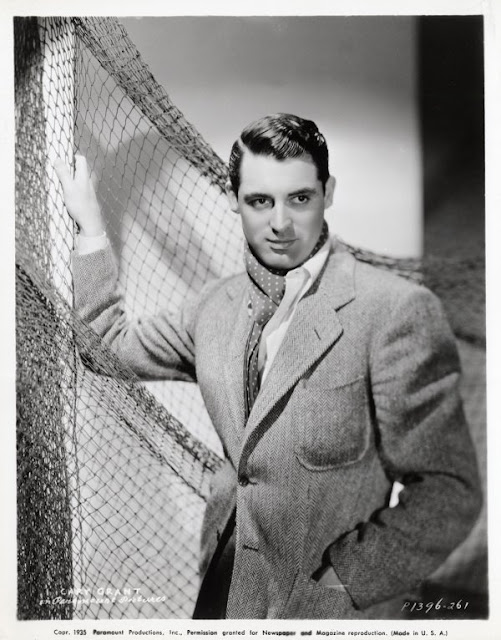The constant, persistent dual identities, though, all synched up to the Grant onscreen, who consistently straddled plains. When he began making films in 1932, Paramount thought him a conventional romantic lead and plugged him into films accordingly to woo women as disparate as Sylvia Sidney, Marlene Dietrich, and Mae West, but it didn't work. Grant seems adrift in his earlier movies partly and paradoxically because the studio kept tossing him lovely life rafts. Yet his best moment in the series's opening film, 1932's Thirty Day Princess (July 9), isn't his last romantic embrace with Sidney, but rather the tiny little moment at a frothy, fancy club. She asks him if someone broke his heart, and he practically throws away the answer, "Someone is going to," then shifts his face.
The standard clinch and kiss didn't suit Grant; he looked much more comfortable moving away from or between women, simultaneously stiff and impotent, a man apart. This distance, in fact, is what made him desirable. Bisexual may not be the right word for him so much as bilateral—he literally kept moving, and the camera raced to keep up with him alongside the women. Manny Farber singled out Grant's His Girl Friday performance as an example of how, arms and legs akimbo, ducking and diving, an actor can literally dictate a film's space. And the way that Grant dictated space, more often than not, was sexual. - Aaron Cutler, Slant Magazine, July 2010
Cinema is that which is between things - Jean-Luc Godard










No comments:
Post a Comment